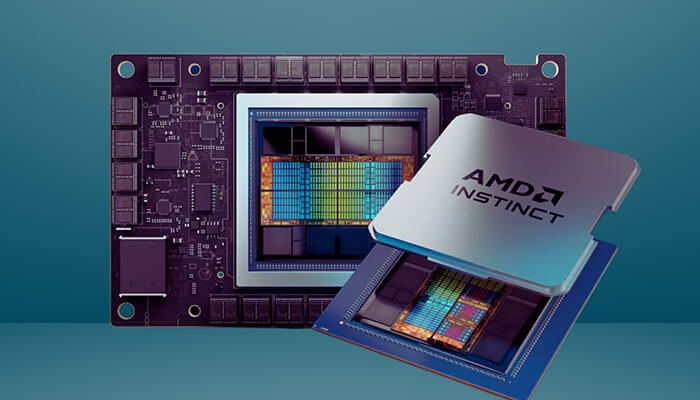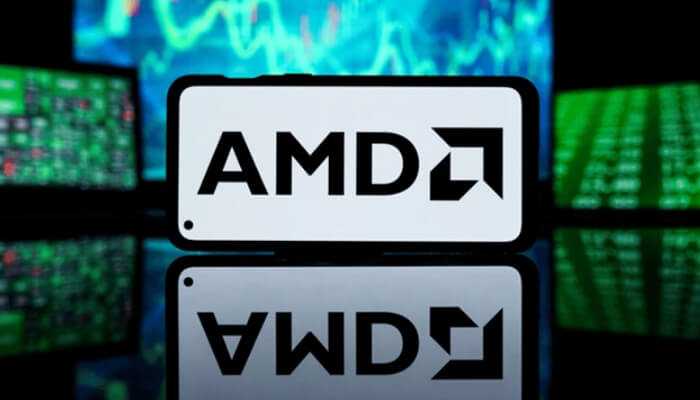Introduction
Advanced Micro Devices (AMD) has long been an influential player within the semiconductor organization, famed for its high-overall performance processors and Graphic playing cards. Recently, AMD’s new AI chips have entered the increasing field of artificial intelligence (AI), launching new AI-targeted chips designed to compete with enterprise leaders like NVIDIA and Intel. These features have the potential to reshape the AI computing panorama, offering new opportunities and demanding situations for numerous stakeholders.
Evolution of AI Chips
AI chips, additionally referred to as accelerators, are specialised hardware designed to correctly system AI workloads. Traditionally, GPUs (Graphics Processing Units) from NVIDIA have dominated this space because of their parallel processing abilities, which are properly suited for the matrix calculations of AI obligations. However, the landscape is evolving with the advent of devoted AI processors and accelerators using numerous agencies, together with AMD.
AMD’s Entry into the AI Market
AMD’s entry into the AI market is marked using the introduction of its MI200 series, which includes the MI250 and MI250X accelerators.
These chips are based totally on the CDNA 2 structure and are designed to supply exquisite overall performance for AI and high-performance computing (HPC) workloads. The key features of AMD’s new AI chips consist of:
High Performance: Leveraging superior 7nm procedure technology, those chips provide excessive throughput and strength performance.
Scalability: Designed to aid massive-scale AI training and inference obligations, making them appropriate for data centres and cloud environments.
Integration with AMD Ecosystem: seamless compatibility with AMD’s existing CPU and GPU merchandise, offering a comprehensive solution for diverse computing needs.
Competitive Landscape
NVIDIA has been the dominant force in the AI chip marketplace, with its CUDA environment and powerful GPUs being the go-to choice for AI researchers and developers.
Intel has also made great strides with its AI accelerators, including Habana Labs’ Gaudi processors. AMD’s entry adds a brand new size to this competitive landscape.
Potential Impacts on the AI Computing Landscape
Enhanced Performance and Efficiency
AMD’s AI chips promise to deliver tremendous performance improvements, potentially lowering the time required for the education of complicated AI fashions. Their electricity performance can also lead to lower operational prices, making AI more available and fee-powerful for groups.
Increased Competition
The advent of AMD’s AI chips intensifies opposition in the AI hardware marketplace. This could cause improved innovation, higher pricing, and more alternatives for purchasers.
Increased competition regularly drives groups to improve their merchandise, which benefits the general enterprise.
Diversification of AI Hardware Options
With AMD coming into the AI chip market, builders and companies now have greater hardware alternatives to choose from. This diversification can lessen dependency on an unmarried supplier, mitigate dangers related to delivery chain disruptions and foster a more resilient AI environment.
Ecosystem Synergies
AMD’s AI chips are designed to work seamlessly with its existing CPUs and GPUs, offering integrated solutions that could streamline AI deployment. This synergy can improve the performance of AI applications and simplify the improvement method, particularly for those already using AMD merchandise.
Challenges and Considerations
Market Penetration
While AMD’s new AI chips show promise, gaining market share in a field dominated by NVIDIA and Intel is challenging. AMD will need to illustrate the superior performance and reliability of its merchandise to convince clients to replace or adopt its solutions.
Software Ecosystem
NVIDIA’s CUDA platform is a massive barrier to access because of its great adoption and sturdy aid for AI development.
AMD has to spend money on its ROCm (Radeon Open Compute) platform to build a competitive software environment that may attract developers.
Long-Term Viability
The long-term effect of AMD’s AI chips will depend on the employer’s capability to sustain innovation and aid in its products.
Continuous development and updates to rising AI technology and packages can be critical for AMD’s fulfilment in this area.
Conclusion
AMD’s new AI chips constitute a significant development within the AI computing landscape. By presenting excessive overall performance and integration with its present surroundings, AMD is properly placed to tie up gamers like NVIDIA and Intel.
The multiplied competition and diversification of AI hardware alternatives can pressure innovation and widen the AI network. However, AMD will need to conquer considerable challenges to establish itself as a main issuer of AI computing answers.




